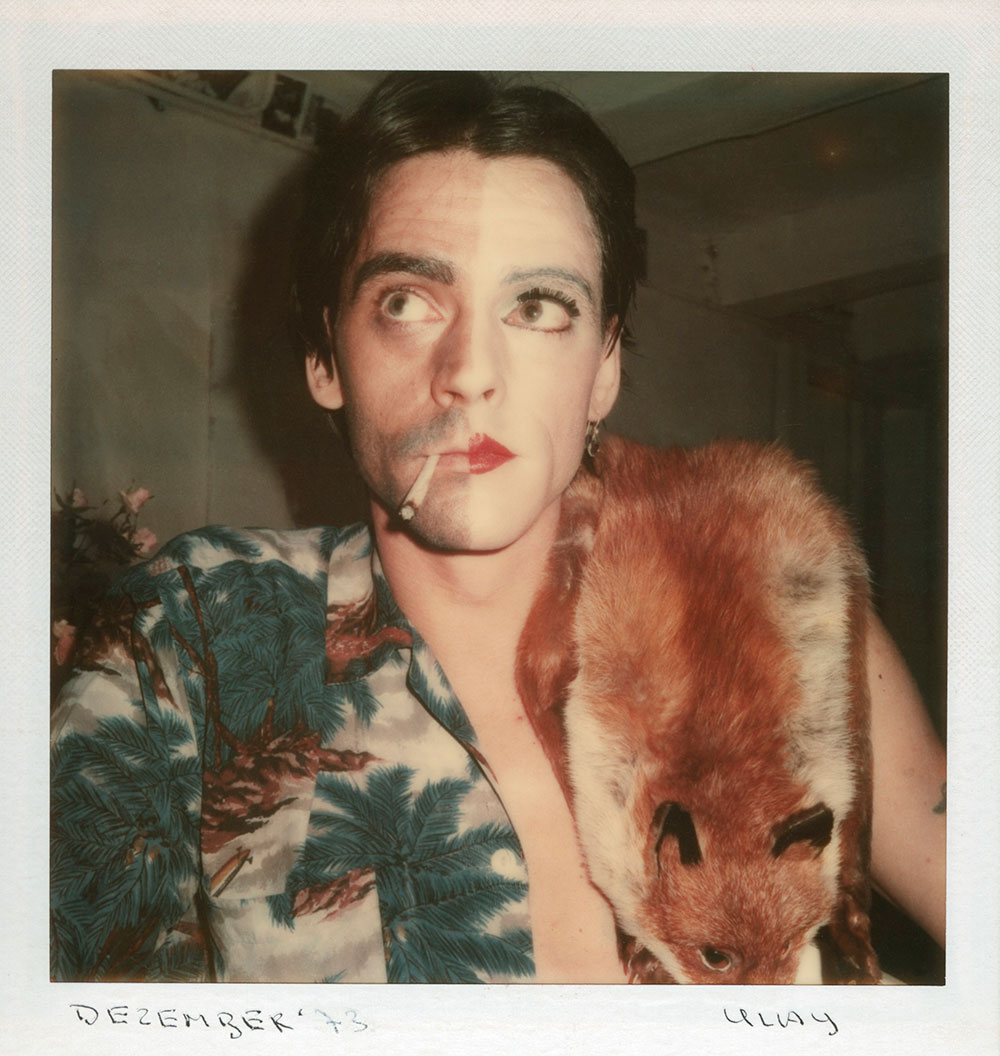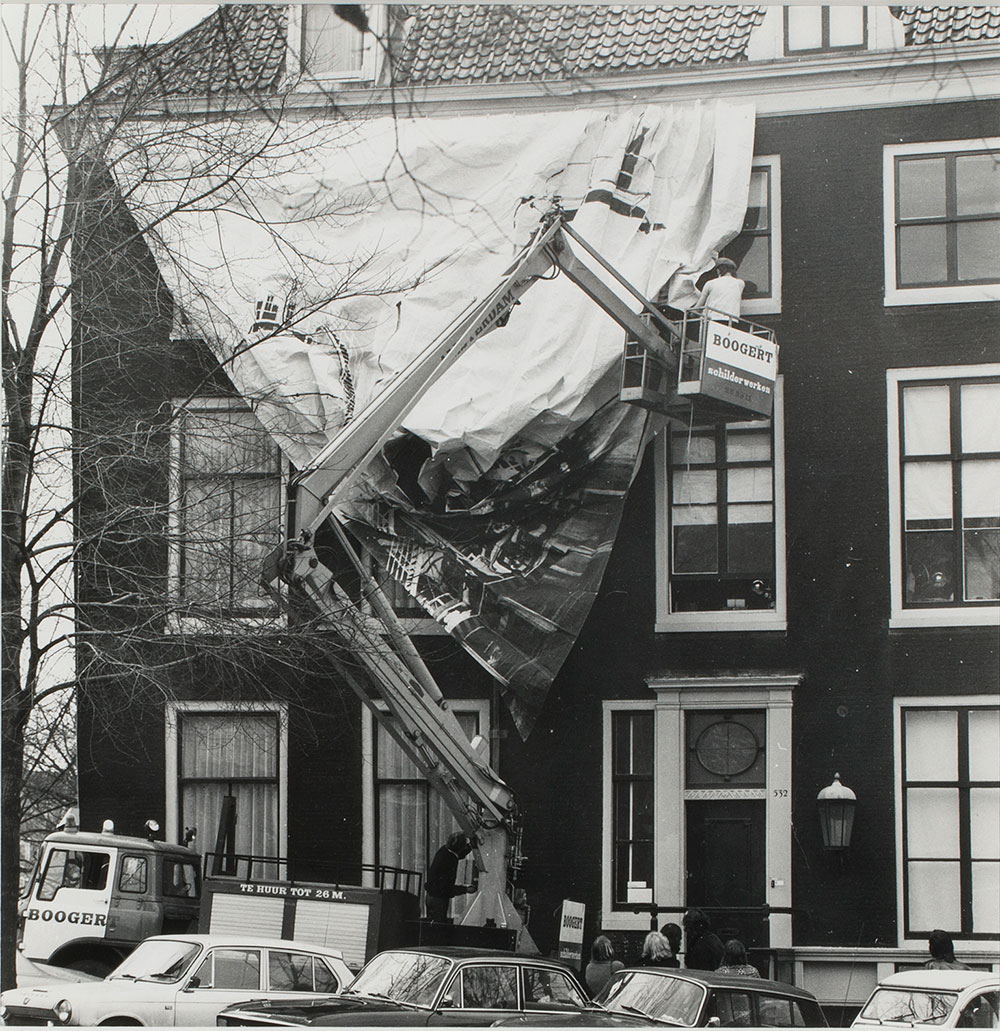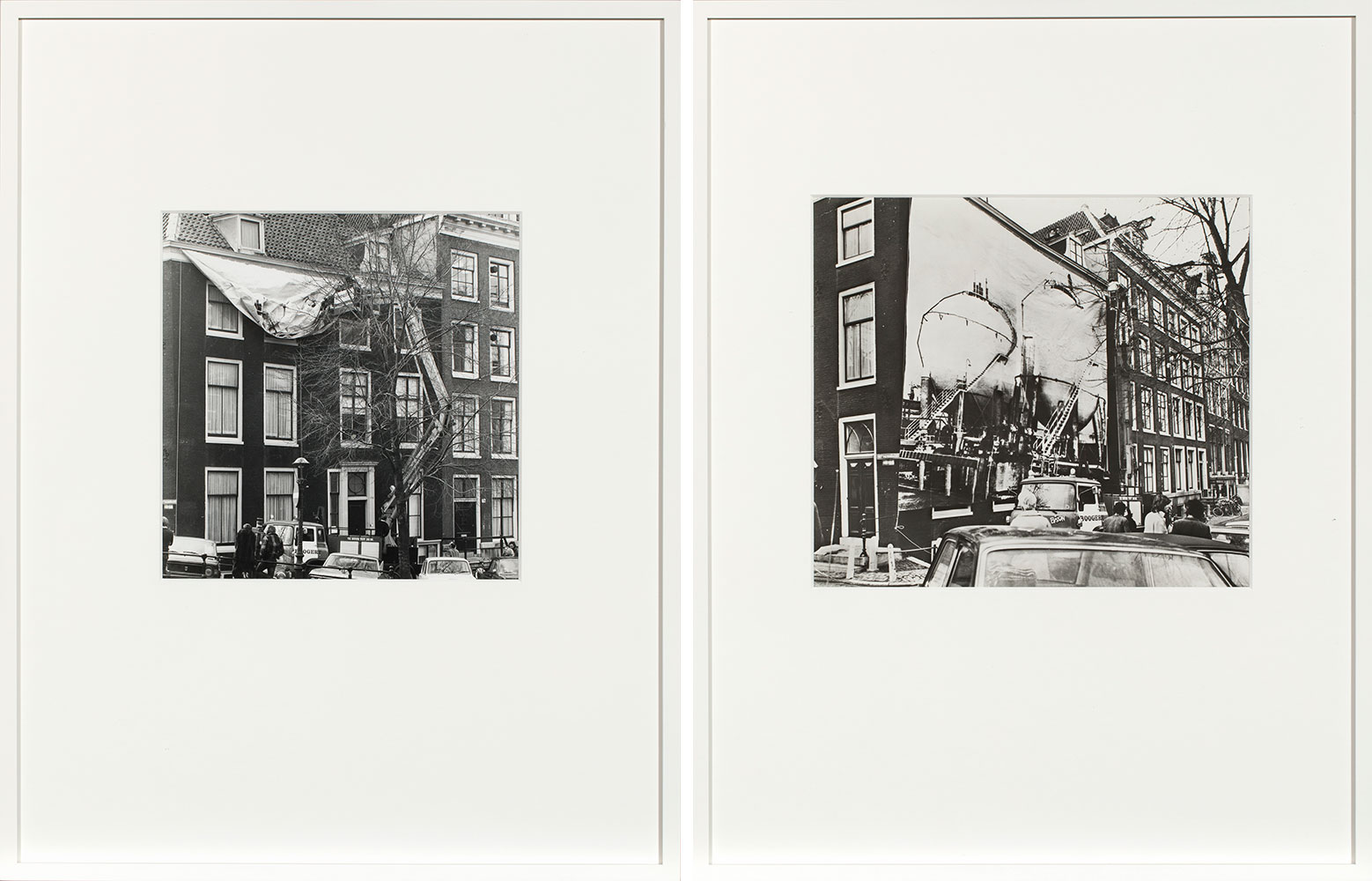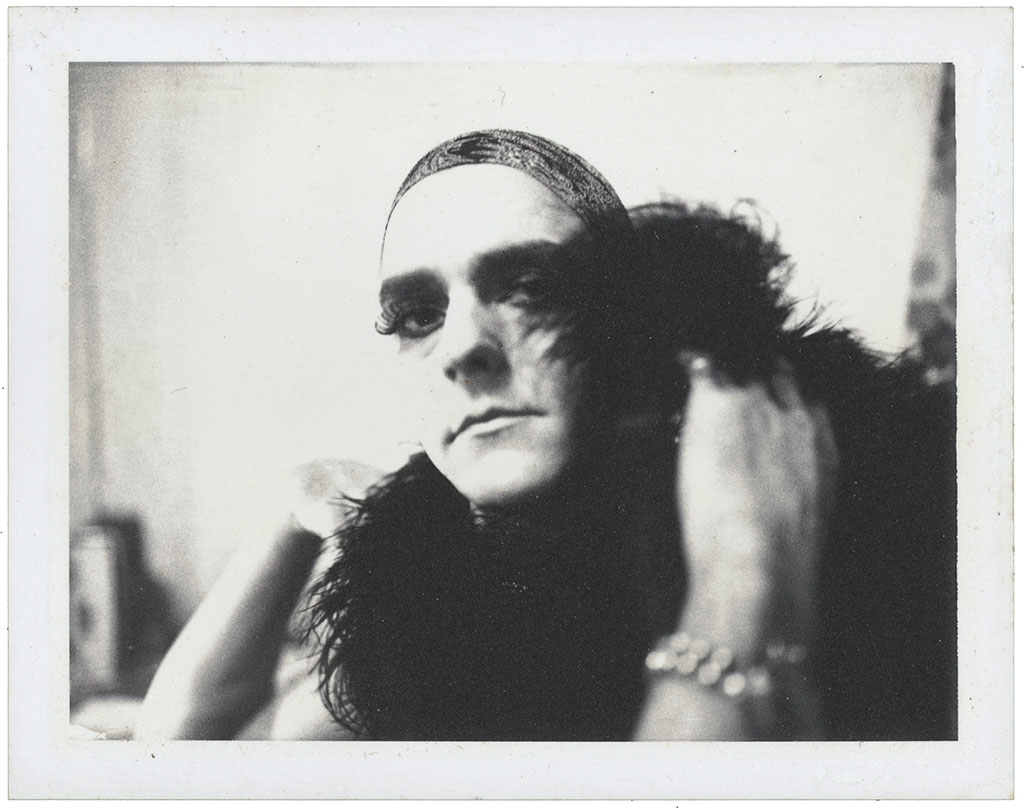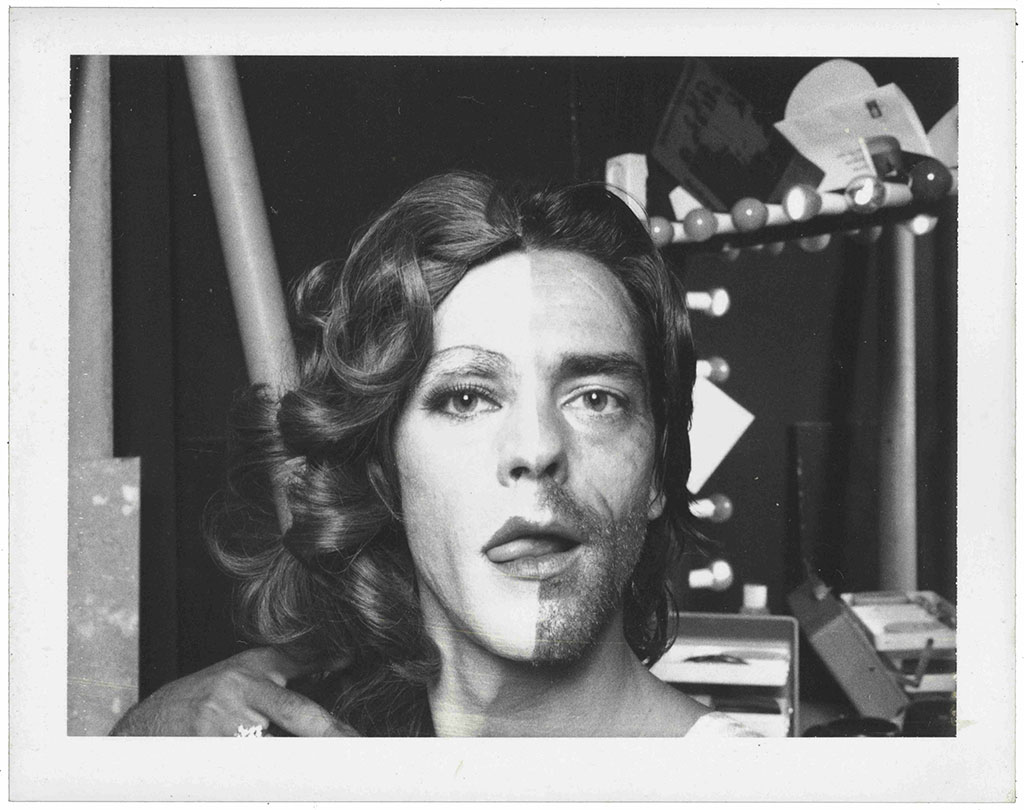ART-PRESENTATION: Ulay-Ulay Was Here
 Since 1971 Frank Uwe Laysiepen is known in artistic circles as Ulay, a pseudonym that combines the initial of his name with the first syllable of his surname. Ulay received international recognition through his radical actions and Polaroid works from the early seventies, followed by the collaborative performances with Marina Abramović (Relation Works 1976-1988) and his photographic experiments from the 1990s until today. His artistic trajectory amounts to a radical and historically unique oeuvre, situated at the intersection of photography and the conceptually oriented approaches towards performance and body art.
Since 1971 Frank Uwe Laysiepen is known in artistic circles as Ulay, a pseudonym that combines the initial of his name with the first syllable of his surname. Ulay received international recognition through his radical actions and Polaroid works from the early seventies, followed by the collaborative performances with Marina Abramović (Relation Works 1976-1988) and his photographic experiments from the 1990s until today. His artistic trajectory amounts to a radical and historically unique oeuvre, situated at the intersection of photography and the conceptually oriented approaches towards performance and body art.
By Dimitris Lempesis
Photo: Stedelijk Museum Archive
With “Ulay Was Here” the Stedelijk Museum presents the largest-ever retrospective of Ulay. While the works that Ulay made with Marina Abramović are iconic, the exhibition shows that he had an impressive solo oeuvre, both before and after their twelve-year collaboration. Ulay’s complex artistic expression is rooted in photography. From its outset, his artistic career was a thematic search for understanding the notions of identity and the body, mainly through series of aphorisms, visual poetry, Polaroids, and intimate performances. Taking hundreds of self-portraits, Ulay explored and modified his body, writing on his skin and adorning, piercing, or cutting it. He developed an approach that was novel in both method and subject matter, using the camera as a tool to investigate his identity while exploring socially constructed issues of gender. In the Polaroid series “S’he” for instance, he presented himself as half man, half woman. Radically merging his life and art, Ulay undertook a life-long exploration of his own identity, searching for what it means to be the “other,” be it another gender or a minority of some kind. Over time, Ulay’s handling of photography became increasingly performative, resulting in “FOTOTOT” a series of performances in 1975 and 1976, which critically examined the transient and changeable nature of the photographic identity and the phenomenon of the audience. Later, performative tendencies within the medium of photography transformed completely into the medium of performance. The action “Irritation – There is a Criminal Touch to Art” (1976) represents a key work within Ulay’s oeuvre, as it emphasizes not only his fight with his own German origin and the historical legacy of Nazism, but also points out the problematic situation of minorities within post-war German society. As a reaction to these failed post-war ‘denazification’ processes, Ulay symbolically dislocated the ‘identity icon’ of Germanness (the painting “Der arme Poet” by the Romantic painter Carl Spitzweg, who was Adolf Hitler’s favorite painter) from the Neue Nationalgalerie and relocated it in the home of a Turkish immigrant family in one of the poor neighborhoods of Berlin. He photographed the work in its new context, and shortly thereafter called the museum director to come and see the new display of the artwork. By performing such a radical act, he wanted to shed light on the immigrants’ condition, stressing that Berlin’s old glory as a symbol of Prussian power had been replaced by the Cold War rhetoric and the humiliating division of the German nation into two entities within the same city. Ulay had arranged to have this action recorded: Jörg Schmitt-Reitwein (the former cameraman of Werner Herzog) filmed the action from a vehicle that was following the van the artist was driving and eventually followed him during the last part of the act into the Turkish family’s home. After “Irritation – There Is a Criminal Touch to Art” Ulay broke new ground in performance art together with Marina Abramović. The two propelled each other into ever more extreme and unexplored realms of emotional discomfort and physical endurance. Also in his later performances, his body remained the object of research. Ulay used his own body as a medium and went to extremes, even to the point of endangering himself; for “GEN.E.T. RATION ULTIMA RATIO”, he even transplanted a piece of his own tattooed skin. His performances with Marina Abramović had this same intensity and confrontational power. In “Breathing In/Breathing Out” (1977) they shared a seemingly endless kiss, at the risk of losing consciousness, while during “Imponderabilia” (1977) they stood naked in a narrow passageway, forcing the arriving audience to make an uncomfortable choice. Ulay was experimental by nature and fascinated by processes, change, uncertainty, and chance. His desire to explore the boundaries of the medium of photography led to using larger Polaroid formats, and eventually working from inside the black box. The enormous size of the negative enabled him to use his own body to interact with it on a scale of 1:1—body and image coincided. Ulay’s work often reflected a commitment to his surroundings. In one of his first actions, in 1976, he stole one of Hitler’s favorite paintings from a Berlin museum and took it to the house of a Turkish family, calling attention to the treatment of minorities in Germany. In Amsterdam during the 1970s, he frequently included drag queens and transgender people in his work, and documented the critical graffiti that appeared on the city’s walls in the photo series “City Virus” as a protest against ongoing urban renewal. With Abramović, he explored traditional male and female roles in Sicilian culture in the installation “Terra della Dea Madre” (1984). From re-examining the problem of nationalism and its symbols in “Berlin Afterimages” and addressing the position of the marginalized individual in contemporary society in the series “Can’t Beat the Feeling – Long Playing Record” around 2004, on both a very personal and societal level, Ulay became engaged in projects and artistic initiatives that raised awareness of the lack of drinking water globally.
Photo: Ulay / Marina Abramović, Relation in Time, 1977, Performance, 16h without public; last hour of the performance in the presence of the public, Studio G7, Bologna, IT. Courtesy ULAY Foundation and Marina Abramović Archives
Info: Stedelijk Museum, Museumplein 10, Amsterdam, Duration: 21/11/2020-18/4/2021, Days & Hours: Daily 10:00-18:00, https://www.stedelijk.nl
